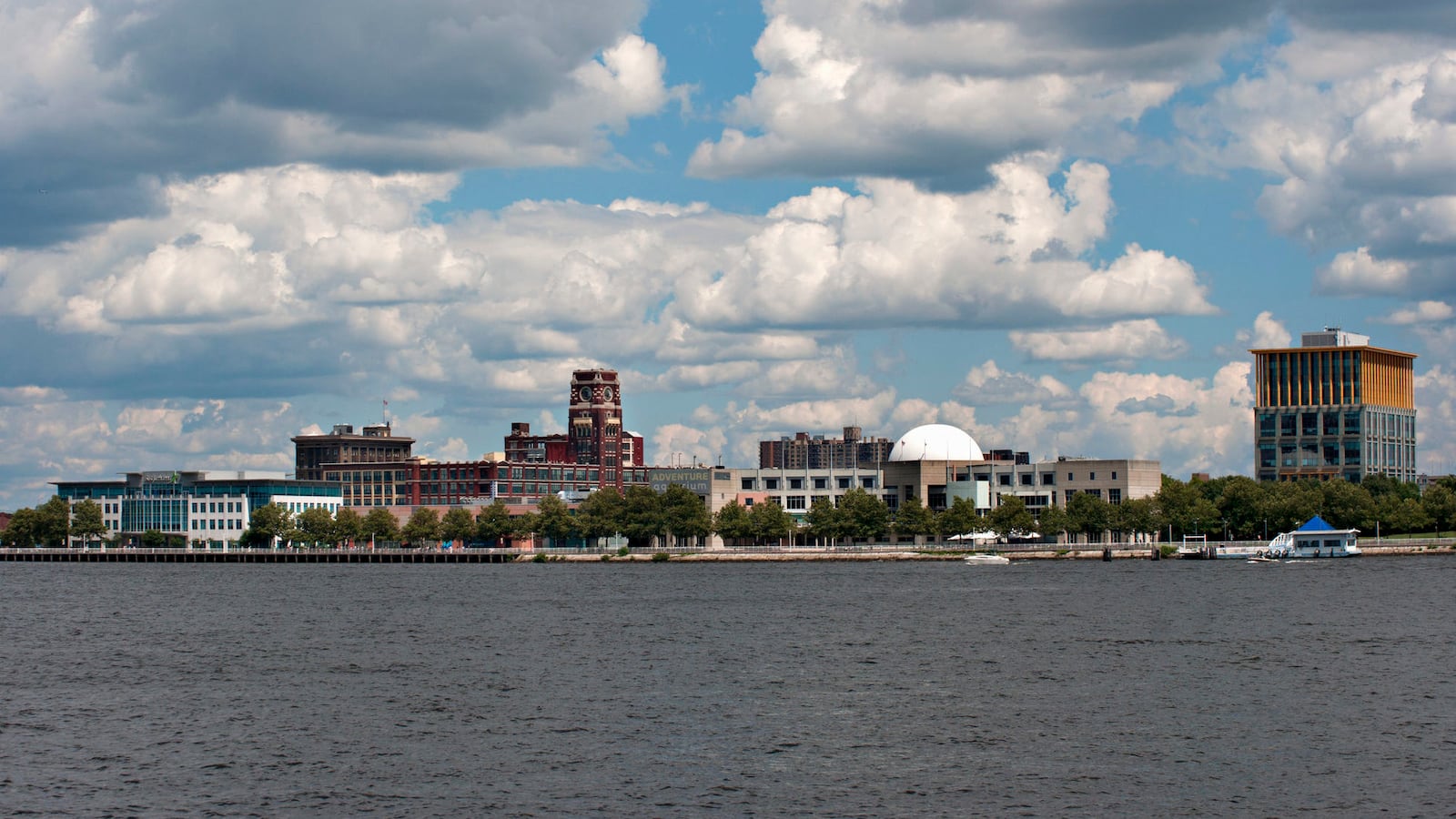The tour almost didn’t happen.
It was my first year as an administrator at an independent charter school in Camden, New Jersey where I had previously taught social studies. For five years, I had been the only Black teacher in the high school building.

I remember sitting in a room with other school leaders, and the room was divided. I had raised the idea that our teachers should tour the city of Camden. By “tour,” I didn’t mean take pictures and stop at a local restaurant to eat. I meant that teachers should walk on the same streets as their students to and from school. They should see the coexistence of pride and poverty. They should smell the amalgam that was food from the corner bodega and the air pollution from the city’s cement and sewage plants. They should touch the ground as they tried to avoid uneven cement and drug paraphernalia. They should hear the screams and laughter of children playing, the old lions reminiscing on when they ran in the wild, and the music blaring from cars sitting on shoes — tires on rims 20 inches or higher, that is. They should feel the heartbeat of the city with each passing step.
I wanted teachers to internalize the essence of the city.
Some people in the room agreed with me; in order for our teachers, who were majority White, to better understand our students, predominantly Black and Latinx, they had to understand the community that bore them. Others didn’t see the benefit or thought that a walk through Camden would embolden those who believed the stereotypes and tropes, further impeding our teachers from best educating our students.
This was something we’d never done before. We had always kept teachers and professional development confined to the school building. However, I believed (and still do believe) that in order to teach in the community, you must understand the life of the community. Understanding is the bridge between desire and accomplishment.
This belief has fueled my own actions in the classroom. I am a Black man, from Camden, and I would sometimes experience side-eye from White teachers due to my rapport with many of the students I taught. Naturally, according to these teachers, I would have a good relationship with the students, simply due to my identity.
However, that’s only part of it. My identity was not an automatic determinant of success with our students. What made me successful was that I cared about our kids. Caring meant that I took time to understand them: their hopes, fears, and the realities they dealt with each day. I wasn’t born with that information. I had to take the time to inquire, learn, and reflect. As a new administrator, I dared to think that if teachers took time to inquire, learn, and reflect as well, they too could become more effective in the classroom.
In the end, we did the tour. The teachers saw, smelled, touched, heard, and felt the city. On some faces, I saw horror. On others, astonishment. On others, I saw bewilderment — the sort of bewilderment that breaks down ignorance and misinformation.
It might seem strange that a school would hire teachers so unfamiliar with the community they are supposed to serve. Yet this is the reality in many schools. About 91% of the students at my school from kindergarten through twelfth grade were low-income, over 99% were students of color, and the vast majority lived in Camden; in contrast, 70% of their teachers were White and almost all lived outside the city, with little familiarity with Camden other than it might have been where their parents grew up.
During the tour, many of these teachers realized that people in Camden, a city considered to be one of the most dangerous in the United States, are like those in rural and suburban areas. They saw people working. They saw people who loved themselves and loved their community. They saw life in a place they thought was dead.
Others faced insecurity. They were “the other,” confronted with their whiteness because it was now apparent in a physical sense. They didn’t believe they would get hurt, but they felt an uneasiness about being the minority. Although White teachers in my school were technically outnumbered by the students, there was a level of safety for White teachers in a place that is historically a White institutional space. On the tour, in a space they did not normally occupy, these teachers wrestled with that insecurity and how it applied to people of color in White spaces every day.
Our teachers also saw the devastation of post-industrialization. Camden was once home to industry: a thriving shipyard, department stores, RCA Victor, and a Campbell’s Soup factory. Those industries left, and so did the jobs. Camden experienced white flight, a deteriorating school system, administrative fiscal mismanagement, and its fair share of political corruption — collectively the result of racist policies such as redlining, blockbusting, and targeted highway construction, as well as zoning ordinances and inflated housing costs in surrounding municipalities. Touring Camden brought our teachers face-to-face with these unfortunate realities.
When we arrived back at our school to debrief, we facilitated an open conversation about what everyone saw, heard, and felt. After the initial invitation to speak, there was a pregnant pause. Finally, a teacher spoke up. She was soft-spoken but confident, and what she said remains with me to this day. She said, “After this experience, I realize that I have work to do; we have work to do.”
She spoke about her hard work preparing lessons and assessments, but how those things meant nothing when she walked Camden’s streets. We reassured her that lessons and assessments do mean something, but that we need to create alignment between what we teach and the world our students live in.
Other teachers began to chime in with their takeaways from the experience and how it had reframed their beliefs about their role as teachers. They discussed what they hoped to do differently in the classroom as a result. A history teacher decided to put together assemblies for Black History Month and Hispanic Heritage Month where activists would be invited to speak about their work. Another teacher pointed out all of the small businesses he saw, from barber shops to the corner bodega, and said that he would teach his students technology in a more entrepreneurial way.
Ultimately, we engaged in the sort of history lesson most people don’t get in history class. We discussed systemic racism. We discussed the intersection of race and class. We discussed how Camden became what it is from what it once was. While we didn’t reach every teacher that day, we touched the hearts and minds of many.
Cultural competency isn’t a gimmick. It’s real work. It’s hard work. It is work that forces us to engage with the uncomfortable. It may not take a visit through your community for teachers to understand the need to be culturally competent. However, it wouldn’t hurt.
And there’s more that we must do. Districts should hire more teachers of color, and we must develop the teachers who are already teaching. The day we toured Camden, we did just that. Our teachers didn’t become experts overnight, but the experience showed them that they needed to grow.
And growth is the goal — both for students and their teachers.
Rann Miller is the director of the 21st Century Community Learning Center, an after-school program in New Jersey. He also served as a school administrator in Camden and taught high school social studies for six years. He publishes an education blog called the Urban Education Mixtape. You can follow him on Twitter @UrbanEdDJ.
About our First Person series:
First Person is where Chalkbeat features personal essays by educators, students, parents, and others trying to improve public education. Read our submission guidelines here.


